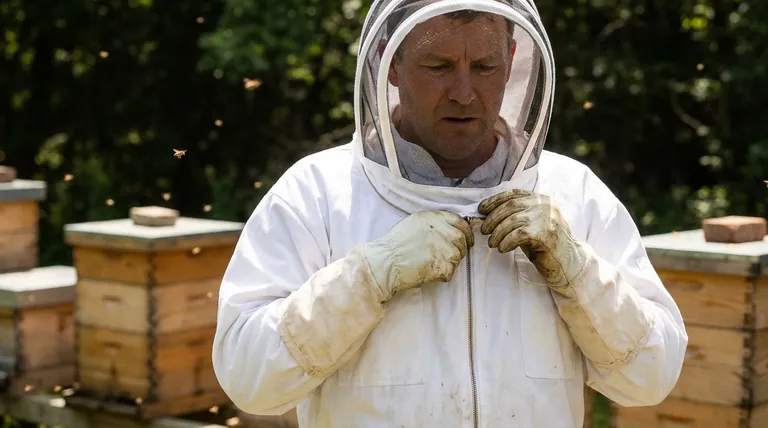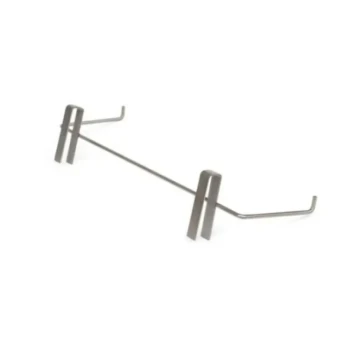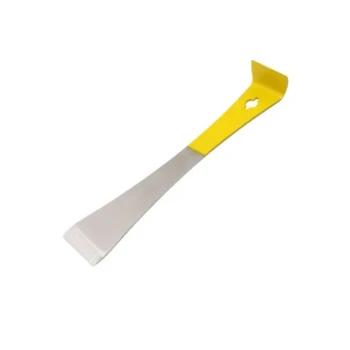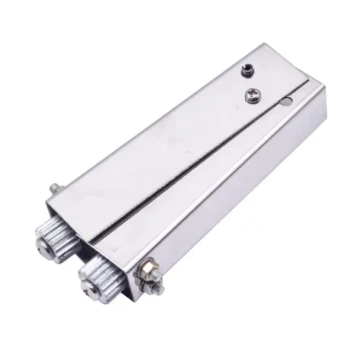The most common mistakes when using a bee suit are choosing a size that is too tight, failing to secure all zippers and closures, and neglecting to inspect the suit for holes or weak points before use. These errors create vulnerabilities that can lead to stings, defeating the very purpose of the protective gear.
Your bee suit is not a single piece of armor but a protective system. Its effectiveness is only as strong as its weakest point, which is almost always a gap, a tear, or a spot where fabric is pulled taut against your skin.

The Suit as a System: Understanding Points of Failure
Think of your suit as a sealed environment. A single bee that finds its way inside is more dangerous than hundreds outside, as it can release an alarm pheromone that attracts others to the same breach. The goal is to eliminate all potential entry points.
Mistake #1: The Wrong Fit
A tight suit is a dangerous suit. When the fabric is stretched taut against your body, it dramatically reduces the distance a bee's stinger needs to travel to reach your skin.
Always choose a suit that is intentionally baggy. This air gap between the fabric and your skin is your most important layer of defense. It ensures that even if a bee attempts to sting through the material, its stinger likely won't be long enough to make contact.
Mistake #2: Neglecting Pre-Use Inspections
Never assume your suit is ready to go. Treat each hive visit like a pre-flight check, carefully inspecting your gear for damage that could compromise its integrity.
Look for small holes, tears, or failing seams, especially around high-stress areas like the knees, elbows, and crotch. Pay close attention to the veil's mesh, as even a tiny rip can allow a bee to enter near your face.
Mistake #3: Leaving Gaps and Openings
The most common entry points for bees are the junctions where different parts of your gear meet. Bees are experts at finding even the smallest gap.
Be meticulous about securing all closures. This includes the main zipper, the zipper that attaches the veil, and any Velcro flaps that cover them. Ensure your gloves fully overlap your suit sleeves and your boots cover the leg openings, leaving no exposed skin at the wrists or ankles.
Understanding the Trade-offs
Choosing and using a bee suit involves balancing absolute protection with practical comfort. Understanding these compromises helps you make informed decisions.
Comfort vs. Protection
A thick, heavy, baggy suit offers maximum protection but can be extremely hot and cumbersome, especially in warm climates. A lighter, ventilated suit improves airflow but may offer slightly less sting resistance.
Your choice depends on your climate and personal tolerance. However, never sacrifice a baggy fit for comfort. A tight ventilated suit is more dangerous than a baggy non-ventilated one.
Material and Color
Bee suits are almost always white or a light color for a specific reason. Dark colors can appear threatening to bees, mimicking a natural predator like a bear, which can provoke a more defensive reaction.
Always opt for light-colored gear to keep the bees calmer. Avoid wearing dark clothing under your suit that might be visible through ventilated panels.
Making the Right Choice for Your Safety
Before every single hive inspection, run through a mental checklist to ensure your protective system is fully sealed and ready.
- If your primary focus is maximum safety: Choose a suit one size larger than you normally wear, and always use gloves and boots that create a significant overlap with the suit's cuffs.
- If your primary focus is routine efficiency: Develop a strict habit of inspecting all zippers, seams, and the veil for damage before you approach the hive.
- If your primary focus is keeping bees calm: Stick to light-colored gear and avoid wearing strong perfumes, colognes, or other scents that can agitate the colony.
True confidence in beekeeping comes from methodical preparation and a deep respect for the animal.
Summary Table:
| Common Mistake | Consequence | Prevention Tip |
|---|---|---|
| Wrong Fit (Too Tight) | Fabric pressed against skin, allowing stings | Choose a baggy suit for a protective air gap |
| Neglecting Pre-Use Inspection | Unseen holes/tears become bee entry points | Inspect seams, knees, elbows, and veil mesh before each use |
| Leaving Gaps & Openings | Bees exploit unsecured zippers and cuffs | Meticulously seal all zippers, Velcro, and glove/boot overlaps |
Protect your apiary with confidence. A properly fitted, high-quality bee suit is your first line of defense. At HONESTBEE, we supply durable, safety-focused beekeeping suits and equipment designed for the rigorous demands of commercial apiaries and distributors. Don't let a simple mistake compromise your safety and productivity. Contact our expert team today to find the right protective gear for your operation and ensure every hive inspection is secure.
Visual Guide

Related Products
- Cotton Beekeeping Suit and Round Hat with Veil Bee Keeper Protective Gear
- Beekeeping Jacket with Hood and Veil for Beekeepers
- White Beekeeping Protective Suit and Hat with Fencing Veil for Beekeepers
- Professional Beekeeping Suit for Kids and Girls Childrens Bee Keeper Suit
- Heavy Duty Cowboy Beekeeper Hat with Visibility Veil Outdoor Professional Beekeeping Protective Gear
People Also Ask
- Do beekeeping suits completely prevent stings? Maximize Your Apiary Safety with the Right Gear
- How should a beekeeping suit be hung to maintain its shape? Protect Your Investment with Proper Storage
- Why is white the predominant color in bee suit designs? | Key to Hive Calm & Beekeeper Safety
- What is recommended for beginners in beekeeping regarding protective clothing? A Complete Safety Guide for New Beekeepers
- What are bee suits made of? Choosing the Right Material for Maximum Protection & Comfort



















